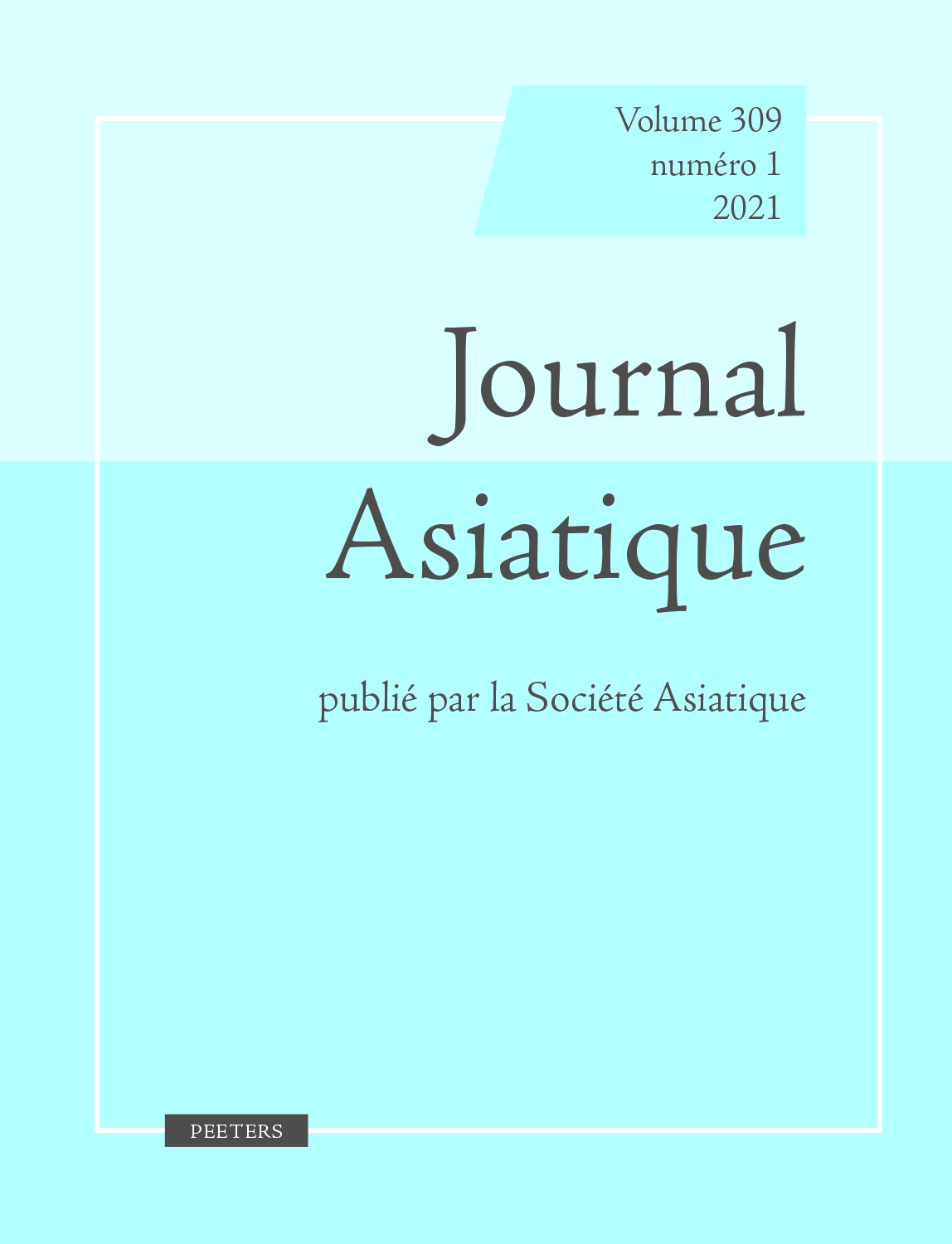 previous article in this issue previous article in this issue | next article in this issue  |

Preview first page |
Document Details : Title: Le dieu zoroastrien Hadiš Author(s): PIRART, Éric Journal: Journal Asiatique Volume: 300 Issue: 1 Date: 2012 Pages: 33-58 DOI: 10.2143/JA.300.1.2186336 Abstract : Le proto-indo-iranien *sadhiš- «place normale, d’origine, fondamentale» (védique sádhiṣ-, avestique hadiš-, pehlevi hdyš, vieux-perse ha-di-i-š-), dont le sens primitif paraît avoir été conservé en védique, n’est pas à expliquer par la racine proto-indo-européenne *sed «s’asseoir». Sa racine est plutôt *sedh «être habituel, normal». L’analyse de l’ensemble des textes indo-iraniens permet de voir que le dieu zoroastrien Hadiš représente l’origine divine du pouvoir nutritif des végétaux. Proto-Indo-Iranian *sadhiš- ‘the normal, original or fundamental place’ (Vedic sádhiṣ-, Avestan hadiš-, Pahlavi hdyš, Old Persian ha-di-i-š-), whose original meaning seems to be preserved in Vedic, is not to be explained by the Proto-Indo-European root *sed ‘to sit’. Its root is rather *sedh ‘to be usual, normal’. Through the analysis of every Indo-Iranian text, it is possible to show that the Zoroastrian god Hadiš represents the divine origine of the nutritional value of vegetables. |
|


